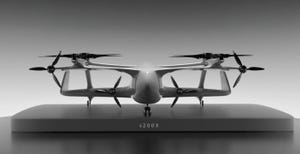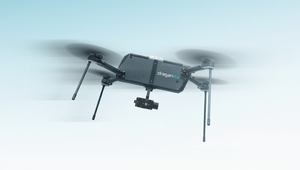NASA's AI Algorithm Speeds up Mars Sample AnalysisNASA's AI Algorithm Speeds up Mars Sample Analysis
The algorithm will automate the identification of organic materials in the search for life on Mars

NASA has developed a machine learning algorithm capable of rapidly analyzing samples collected by rovers on the surface of Mars to speed up the process of identifying organic compounds.
The algorithm, which NASA scientists have spent more than a decade training, is designed to identify organic materials detected by the rover.
By automating the identification process and sending the data back to scientists on Earth, the rover can focus on detecting samples while on the surface and identify patterns that might not be obvious to humans.
“The more we do to optimize the data analysis, the more information and time scientists will have to interpret the data,” said NASA data scientist Victoria Da Poian. “This way, we can react quickly to results and plan next steps as if we are there with the rover, much faster than we previously would have.”
The algorithm was trained to identify examples of substances that may be found on Mars and tasked with identifying them.
Information from the MOMA instrument will be fed into the system, which will output predictions of the chemical composition of a sample.
Its first Mars deployment will be on board the Rosalind Franklin rover on the European Space Agency-led mission to Mars which will lift off no earlier than 2028.
Information collected by a Mars Organic Molecule Analyzer (MOMA) instrument will be fed into the algorithm to identify samples before being sent back to scientists on Earth for further analysis.
“This machine learning algorithm can help us by quickly filtering the data and pointing out which data are likely to be the most interesting or important for us to examine,” said Xiang “Shawn” Li, a mass spectrometry scientist in the Planetary Environments lab at NASA Goddard’s Space Flight Center.
The algorithm forms part of the rover’s arsenal of equipment as it seeks to gather information to determine if life ever existed on the Red Planet.
The rover will drill 6.6 feet into the planet’s surface to collect samples, marking the deepest excavation by scientists on the planet.
“Organic materials on Mars’ surface are more likely to be destroyed by exposure to the radiation at the surface and cosmic rays that penetrate into the subsurface,” Li said. “But two meters of depth should be enough to shield most organic matter. MOMA therefore has the potential to detect preserved ancient organics, which would be an important step in looking for past life.”
This story first appeared in IoT World Today's sister publication AI Business.
About the Author
You May Also Like
.jpg?width=100&auto=webp&quality=80&disable=upscale)
.jpg?width=400&auto=webp&quality=80&disable=upscale)
.jpg?width=700&auto=webp&quality=80&disable=upscale)
.jpg?width=700&auto=webp&quality=80&disable=upscale)

.jpg?width=300&auto=webp&quality=80&disable=upscale)


